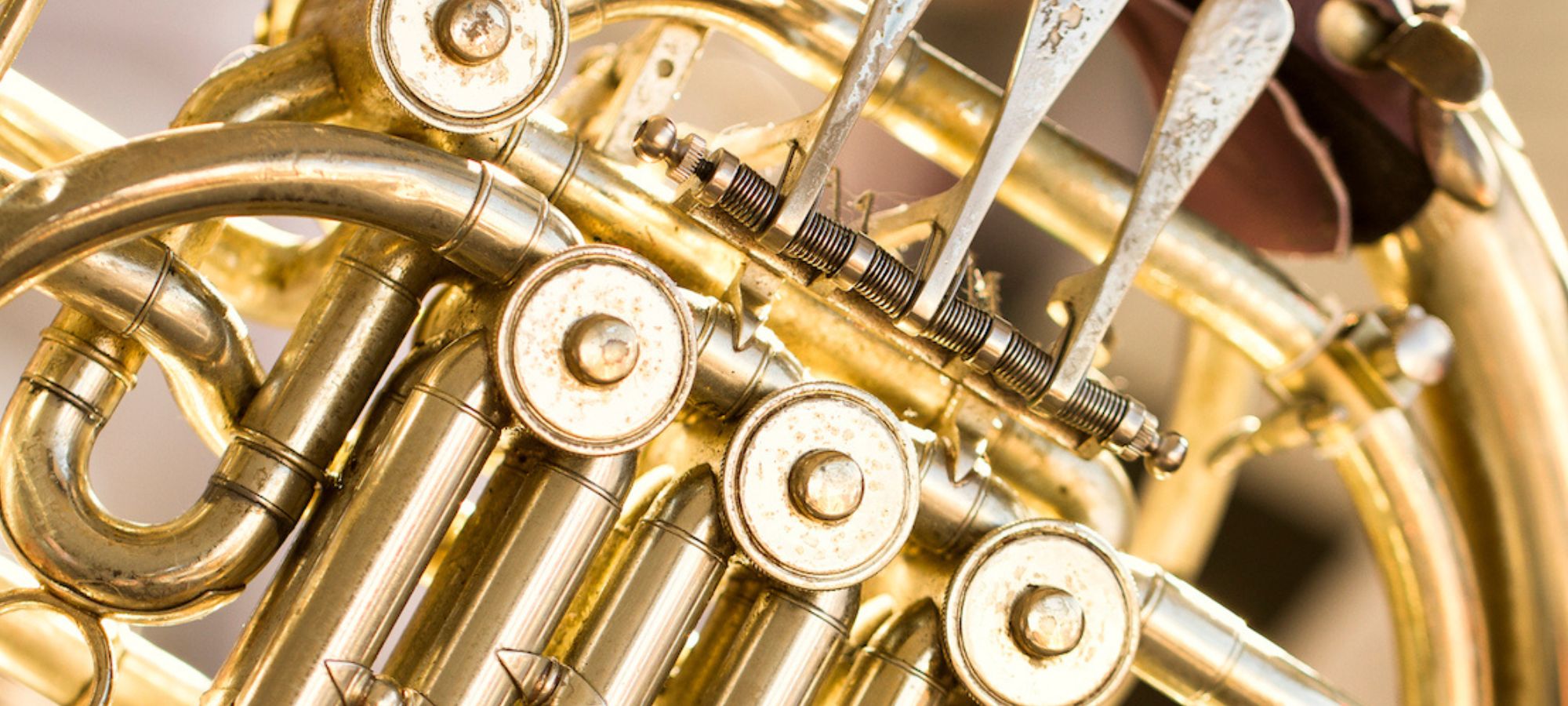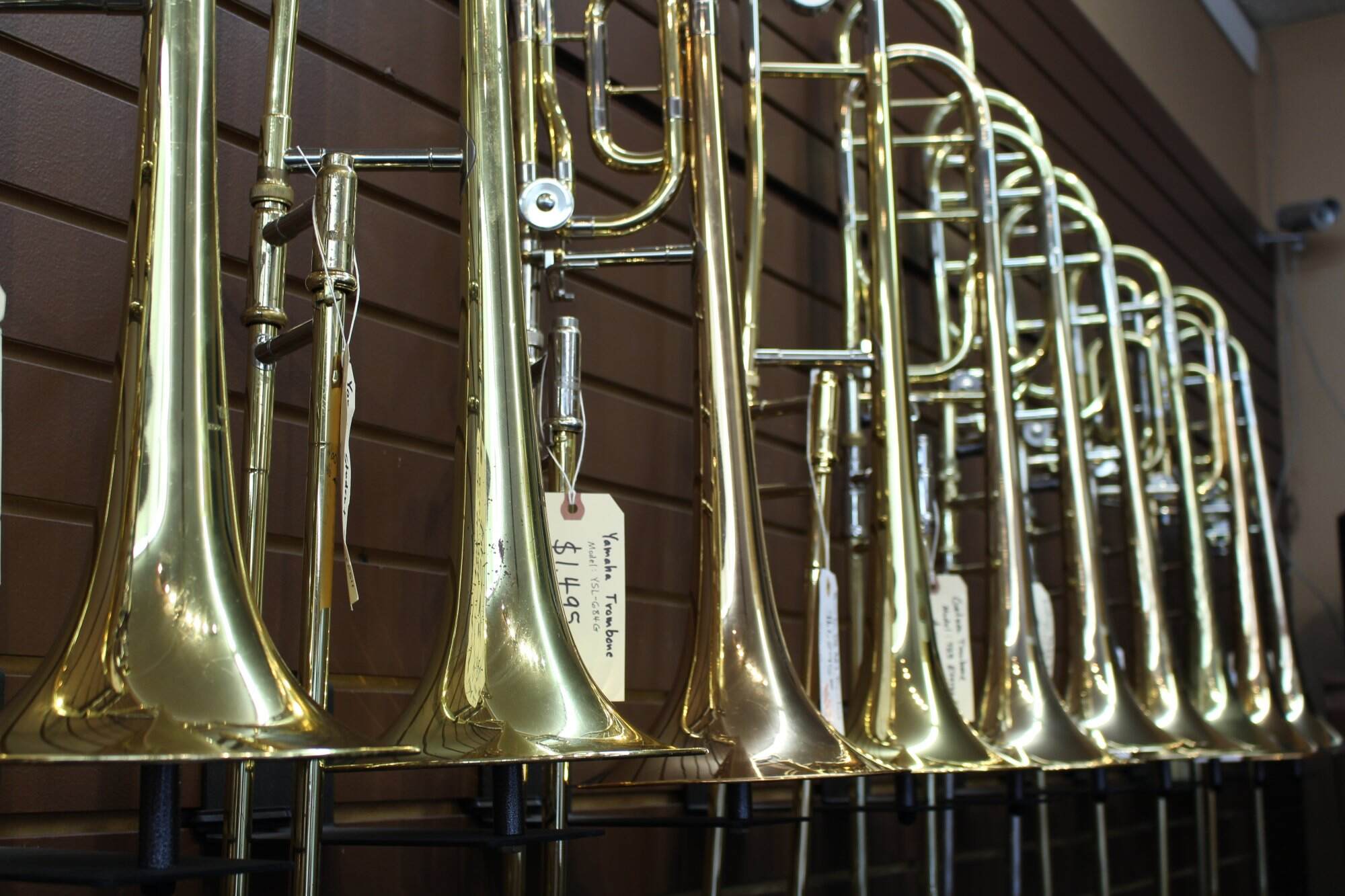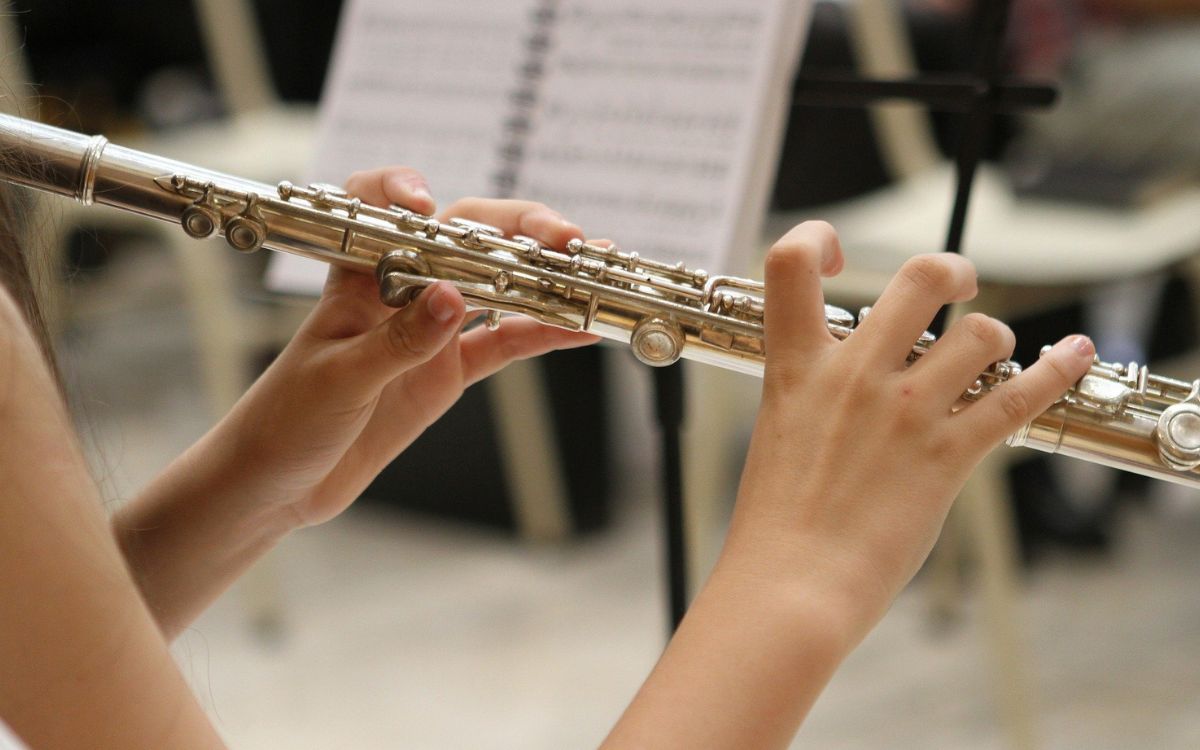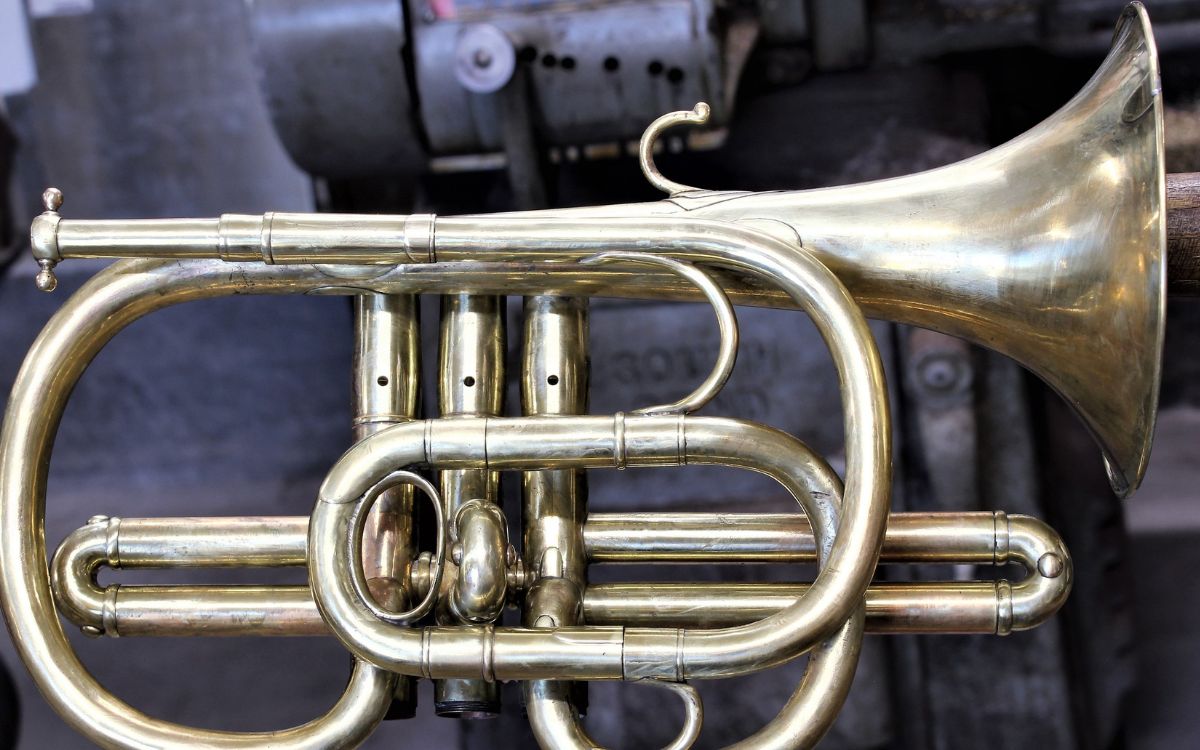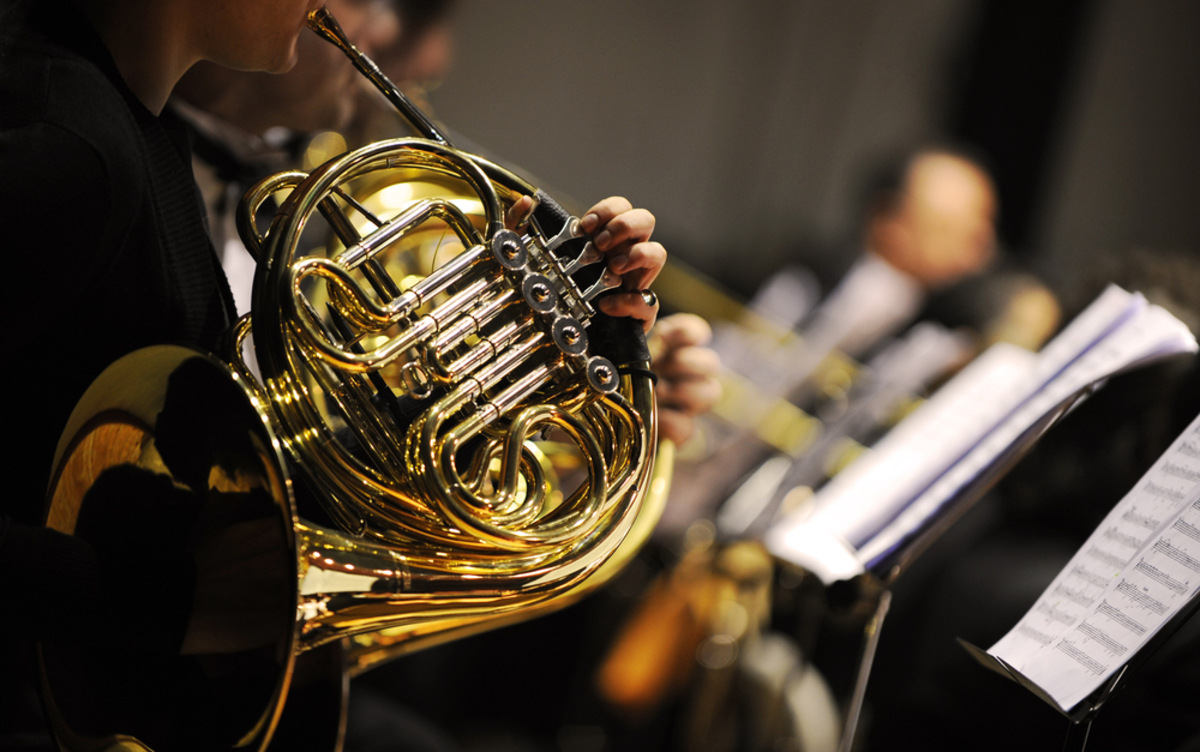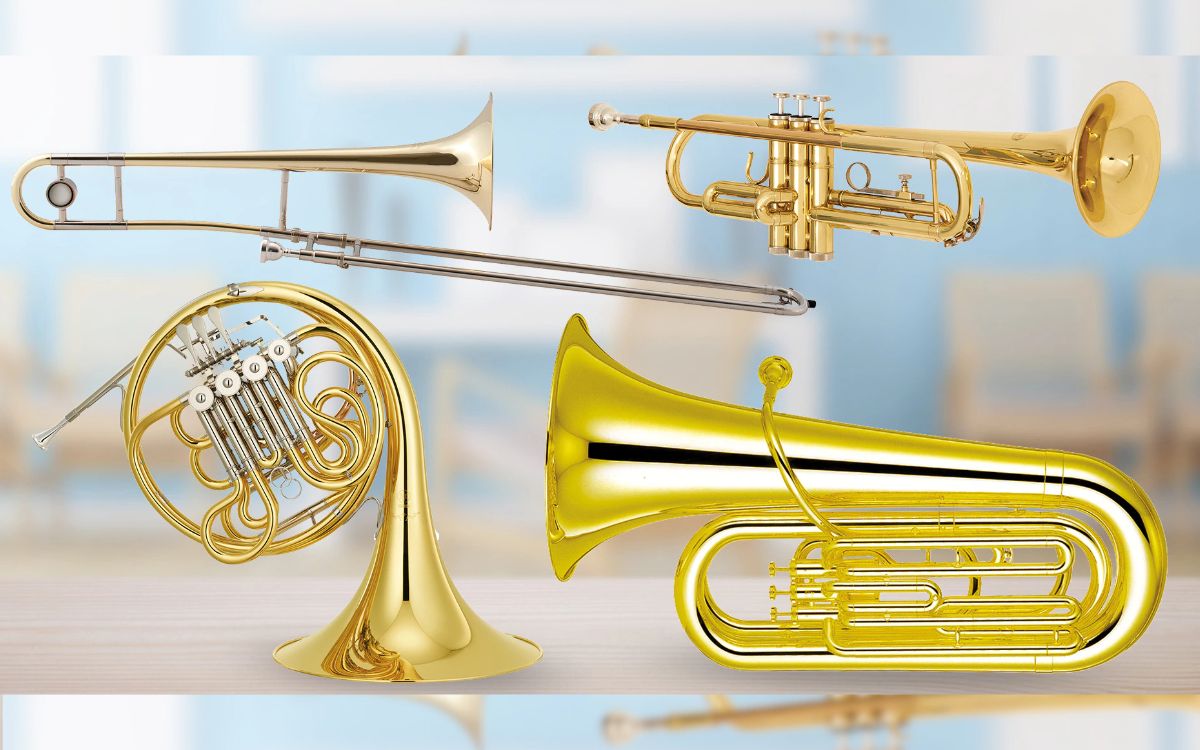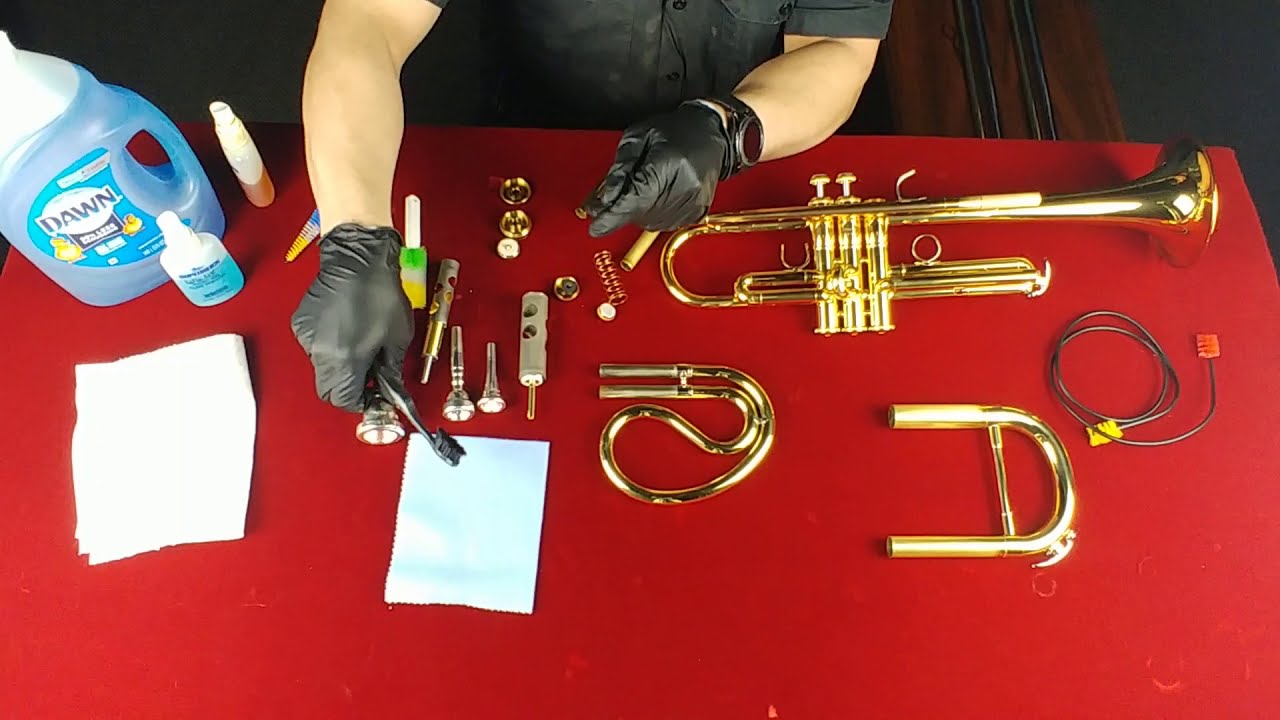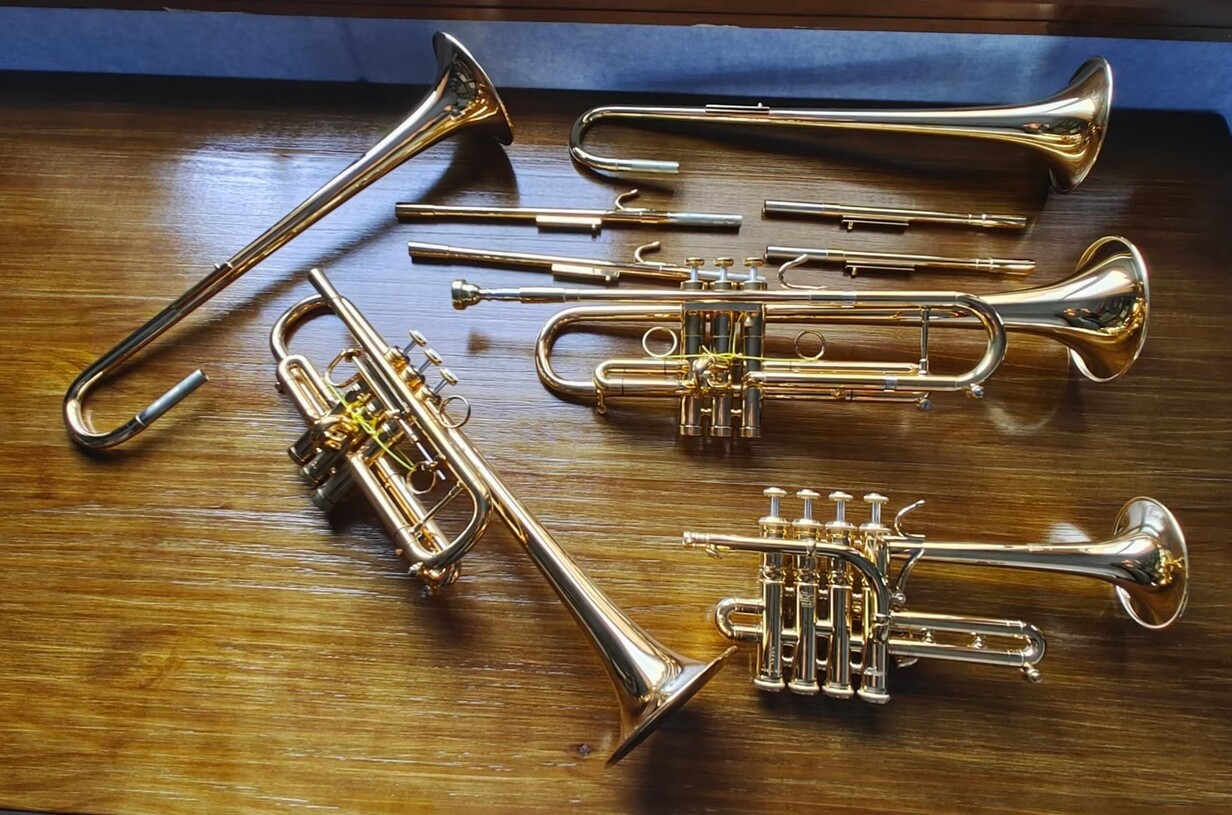Home>Instruments>Brass Instruments>How To Play 2/4 Time On A Brass Instruments
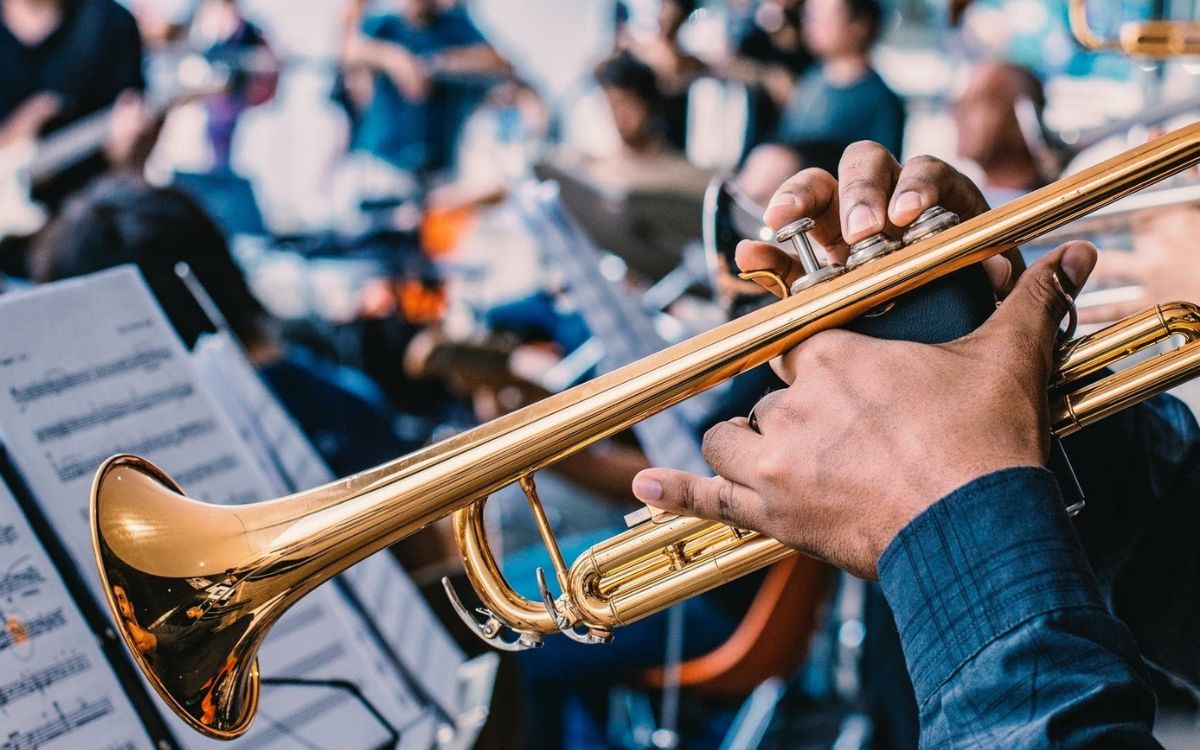

Brass Instruments
How To Play 2/4 Time On A Brass Instruments
Published: January 15, 2024
Learn how to play in 2/4 time on brass instruments. Enhance your musical skills with expert tips and techniques.
(Many of the links in this article redirect to a specific reviewed product. Your purchase of these products through affiliate links helps to generate commission for AudioLover.com, at no extra cost. Learn more)
Table of Contents
Introduction
Playing a brass instrument is a rewarding and exciting musical pursuit. Brass instruments such as the trumpet, trombone, and French horn have a rich history and a unique sound that adds depth and character to any musical ensemble. Whether you are a beginner or an experienced musician, understanding and mastering different time signatures is essential for becoming a proficient brass player.
One commonly used time signature in music is 2/4 time. This time signature indicates that there are two beats per measure, with each beat divided into two equal parts. Understanding how to play in 2/4 time on a brass instrument allows you to participate in a wide range of musical genres, including marches, polkas, and many popular songs.
In this article, we will explore the fundamentals of playing in 2/4 time on brass instruments, including the basic techniques, common rhythms, and advanced techniques for expressive playing. Whether you are a beginner or looking to refine your skills, this guide will provide you with valuable insights and tips to help you master 2/4 time signature on your chosen brass instrument.
Before we dive into the techniques, it is essential to have a clear understanding of what 2/4 time signifies and how it influences the music we play. So, let’s start by unraveling the mysteries of 2/4 time signature.
Understanding 2/4 Time Signature
Time signature is a musical notation that indicates the number of beats per measure and the type of note that receives one beat. In the case of 2/4 time signature, the top number, which is 2, represents the number of beats in each measure, while the bottom number, which is 4, represents the type of note that receives one beat, usually a quarter note.
2/4 time signature is known as a simple duple meter, as it consists of two beats per measure and the beats are divided into two equal parts. This time signature is often associated with lively and energetic music, making it popular in march music, folk songs, and dances.
When playing in 2/4 time, it is important to have a strong sense of pulse and rhythmic accuracy. The first beat of each measure is typically emphasized, giving the music a distinct marching feel. It is crucial to maintain a consistent tempo and a steady beat throughout the piece to create a cohesive and engaging performance.
While 2/4 time signature may seem straightforward, it is essential to be aware of any variations or syncopations that may occur within a piece of music. These variations can add complexity and interest to the music, challenging the brass player to adapt and maintain a solid sense of rhythm.
By understanding the fundamentals of 2/4 time signature, you will be well-equipped to tackle the various techniques and rhythms that are commonly encountered when playing brass instruments in this time signature. So, let’s delve into the specific techniques and approaches for playing in 2/4 time on brass instruments.
Brass Instruments in 2/4 Time
Brass instruments are incredibly versatile and can be played in a wide variety of musical genres and time signatures, including 2/4 time. The inherently vibrant and resonant sound of brass instruments makes them particularly well-suited for playing in 2/4 time, as they can create a strong and rhythmic foundation for the music.
Let’s take a look at some of the brass instruments commonly played in 2/4 time:
- Trumpet: The trumpet is a popular brass instrument that excels in playing melodies and adding brightness to the music. In 2/4 time, the trumpet often takes on the lead role, playing spirited and catchy melodies that drive the rhythm forward.
- Trombone: The trombone is a versatile brass instrument that can play both melodic and supporting roles in 2/4 time. Its smooth and slide-based nature allows for expressive slides and glissandos, adding a unique flavor to the music.
- French Horn: The French horn brings depth and richness to the brass ensemble in 2/4 time. Its warm and mellow tones provide a beautiful contrast to the sharper sounds of the trumpet and trombone.
- Euphonium: The euphonium, often referred to as the “tenor tuba,” is a brass instrument capable of producing a rich and powerful sound. It is commonly used in 2/4 time to provide harmony and support to the lead instruments.
- Tuba: The tuba, with its low and resonant tones, provides a solid foundation and adds a deep and powerful element to the brass ensemble in 2/4 time. It plays an integral role in anchoring the rhythm and providing a strong bass line.
When playing in 2/4 time, brass instruments work together to create a cohesive and energetic sound. The interplay between the different instruments, with their unique tones and roles, adds depth and complexity to the music.
Now that we have covered the brass instruments commonly played in 2/4 time, let’s explore the basic techniques you need to master to effectively play in this time signature.
Basic Techniques for Playing 2/4 Time on Brass Instruments
Playing in 2/4 time on a brass instrument requires a solid foundation of basic techniques. By mastering these techniques, you will be able to execute the rhythms accurately and contribute to the cohesive sound of the ensemble. Here are some essential techniques to focus on:
- Accurate counting: Counting is crucial when playing in 2/4 time. Be sure to count each beat and division of the beat accurately. This will help you maintain a steady tempo and stay in sync with the rest of the ensemble.
- Breath control: Proper breath control is essential for brass instrument players. Take deep, controlled breaths to support your sound and maintain a consistent quality. This will help you play with clarity and precision in 2/4 time.
- Articulation: Articulation refers to the way you start and separate each note. In 2/4 time, it is important to articulate each note cleanly to create a rhythmic and precise sound. Pay attention to the attack of each note and strive for clarity.
- Rhythmical accuracy: As 2/4 time is driven by a strong and steady rhythm, it is essential to play with precision and accuracy. Practice playing rhythms with a metronome to develop a sense of timing and ensure that your notes are placed exactly where they should be.
- Dynamic control: Playing with dynamic contrast adds depth and interest to the music. In 2/4 time, experiment with different dynamics to bring out the nuances in the melodies and create a compelling performance. Be mindful of the balance between the different instruments in the ensemble.
- Phrasing: Phrasing involves shaping and connecting notes to create musical phrases. In 2/4 time, pay attention to phrasing to bring out the character and emotion of the music. Use dynamics, subtle accents, and slight pauses to enhance the musicality of your playing.
Remember to practice these techniques consistently to develop a solid foundation in playing in 2/4 time. As you become more comfortable with these basics, you can move on to more advanced techniques to further refine your skills and expressiveness in 2/4 time signature.
Now that you have a good grasp of the basic techniques, let’s explore some common rhythms encountered in 2/4 time.
Common Rhythms in 2/4 Time
Playing in 2/4 time involves mastering various rhythmic patterns. These rhythmic patterns form the foundation of the music and give it its distinctive groove. By becoming familiar with these common rhythms, you will be able to navigate through pieces in 2/4 time with confidence and precision.
Here are some of the common rhythms you may encounter in 2/4 time on brass instruments:
- Quarter Notes: In 2/4 time, each beat is represented by a quarter note. Playing a quarter note means holding the note for the full value of one beat. Practice playing simple sequences of quarter notes to develop a solid understanding of the rhythm.
- Eighth Notes: Eighth notes are shorter and more rapid than quarter notes. In 2/4 time, each beat can be divided into two eighth notes. Take care to play these notes evenly and accurately, maintaining a steady rhythm throughout.
- Half Notes: While less common in 2/4 time, half notes are held for two beats each. These longer notes provide contrast and a sense of duration within the rhythmic structure. Pay attention to the length of each half note and ensure that you hold them for the appropriate duration.
- Syncopation: Syncopation occurs when the emphasis is placed on offbeats or weak beats, creating a sense of rhythmic tension. In 2/4 time, syncopation can add excitement and interest to the music. Practice playing syncopated rhythms to develop a sense of timing and bring a lively feel to your playing.
- Rests: Rests are equally important in 2/4 time as they provide periods of silence within the music. Pay attention to rests indicated in the sheet music and use them to create space and shape in your performance. Rests can greatly enhance the rhythmic drive and overall impact of the music.
It’s important to practice these common rhythms in isolation and gradually incorporate them into musical phrases. Start with a slow tempo and gradually increase the speed as you become more comfortable with the rhythms. Consistent practice will help you internalize these patterns and play them with ease.
As you gain proficiency with the common rhythms in 2/4 time, you can move on to more advanced techniques that allow for expressive playing within this time signature.
Next, let’s explore some advanced techniques that will help you add depth and emotion to your performance in 2/4 time.
Advanced Techniques for Expressive Playing in 2/4 Time
While mastering the basic techniques and common rhythms in 2/4 time is essential, incorporating advanced techniques into your playing can take your performance to the next level. These techniques allow for greater expressivity, dynamics, and musicality when playing brass instruments in 2/4 time.
Here are some advanced techniques to consider for expressive playing:
- Dynamic Shaping: Use dynamic contrasts to shape your phrases and highlight important musical moments. Experiment with varying dynamics throughout the piece to create a sense of tension and release. Gradually increase or decrease the volume to add depth and emotional impact.
- Vibrato: Vibrato is a technique used to add warmth and expressiveness to your sound. Experiment with different vibrato styles and speeds to enhance the melodic lines and add a touch of emotion to your playing. Use vibrato sparingly and with intention to create a captivating performance.
- Articulation Variations: Explore different articulation techniques such as legato, staccato, and accents to shape your phrases and add interest to the music. Be intentional with your articulation choices, emphasizing important notes and creating rhythmic interest within the 2/4 time framework.
- Slides and Glissandos: Brass instruments such as the trombone are capable of glissandos and slides. These techniques can be used effectively to transition between notes or to add expressive elements to the music. Experiment with smooth and controlled slides to create unique musical effects.
- Expressive Phrasing: Pay attention to the natural phrasing of the music and incorporate expressive elements into your playing. Use subtle pauses, slight tempo variations, and sustained notes to add depth and emotion to the melodic lines. Focus on connecting notes smoothly and creating a seamless flow in your performance.
- Personal Interpretation: As you become more comfortable with the technical aspects of playing in 2/4 time, allow yourself to infuse your personal interpretation into the music. Explore your own musical ideas, taking liberties with dynamics, phrasing, and expression to create a unique and engaging performance.
Remember that these advanced techniques should be used tastefully and with musicality in mind. They should enhance the music and serve the overall artistic vision of the piece.
By incorporating these advanced techniques into your playing in 2/4 time, you will be able to captivate audiences and bring a heightened level of emotion and expression to your performances.
Now that we have covered the advanced techniques, let’s move on to some tips and tricks to help you master 2/4 time on your brass instrument.
Tips and Tricks for Mastering 2/4 Time on Brass Instruments
Mastering 2/4 time on brass instruments requires effort, practice, and attention to detail. To help you on your journey to becoming a skilled 2/4 time player, here are some valuable tips and tricks to keep in mind:
- Practice with a metronome: A metronome is a valuable tool for developing a strong sense of rhythm and timing. Practice playing in 2/4 time with a metronome to improve your accuracy and maintain a steady tempo.
- Break it down: If you’re struggling with a particular section or rhythm, break it down into smaller parts. Practice each part slowly and gradually increase the speed as you become more comfortable. It’s important to build a solid foundation before attempting to play at faster tempos.
- Record yourself: Recording yourself while practicing or performing in 2/4 time allows you to objectively assess your playing and identify areas for improvement. Listen for clarity, intonation, and rhythmic accuracy, and make adjustments as necessary.
- Listen to professionals: Take the time to listen to professional brass players who excel in 2/4 time. Pay attention to their phrasing, articulation, and overall musicality. This can inspire you and provide valuable insights into how to approach playing in this time signature.
- Play with others: Joining a brass ensemble or playing with other musicians in 2/4 time can greatly enhance your skills. It allows you to collaborate, listen, and adjust to the dynamics and nuances of the music. It also provides valuable opportunities for musical expression and growth.
- Seek guidance from a teacher or mentor: A knowledgeable teacher or mentor can provide guidance, correct technique flaws, and offer valuable feedback. They can help you refine your skills, troubleshoot specific challenges, and offer personalized advice tailored to your needs.
- Experiment with different styles: Explore different musical styles in 2/4 time, such as march music, folk songs, or popular tunes. Each style has its own unique characteristics and nuances. By exposing yourself to a variety of musical genres, you can expand your repertoire and develop a versatile approach to playing in 2/4 time.
- Stay consistent and patient: Mastery of any skill takes time and dedication. Practice regularly and be patient with yourself. Celebrate small victories along the way and remember that progress comes with consistent effort and perseverance.
By incorporating these tips and tricks into your practice routine, you will steadily improve your ability to play confidently and expressively in 2/4 time on your brass instrument.
Before we conclude, let’s recap what we have covered in this guide on playing in 2/4 time on brass instruments.
Conclusion
Congratulations! You have reached the end of this comprehensive guide on playing in 2/4 time on brass instruments. We have explored the fundamentals of 2/4 time signature, the role of different brass instruments in this time signature, and the basic and advanced techniques for playing in 2/4 time.
By understanding the intricacies of 2/4 time and practicing the techniques outlined in this guide, you have equipped yourself with the tools necessary to become a skilled brass player in this popular time signature. From accurate counting and breath control to dynamic shaping and expressive playing, you now have a solid foundation to bring life, energy, and emotion to your performances in 2/4 time.
Remember, practice is key. Consistent and dedicated practice will allow you to refine your skills, master the common rhythms, and incorporate advanced techniques for greater expressivity. Don’t be afraid to experiment, listen to professionals, and seek guidance from mentors along the way.
Playing in 2/4 time on your chosen brass instrument is an exhilarating experience. The vibrant sound, rhythmic drive, and expressive possibilities make it a captivating time signature for brass players. Embrace the challenges, enjoy the process, and let your musicality shine through as you bring joy and excitement to every piece you play.
Now it’s time to grab your brass instrument, embrace the rhythm of 2/4 time, and let your talent soar!


